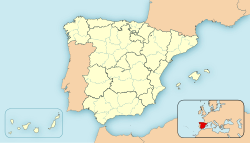History
The origin of Torre de Miguel Sesmero, could be Celtic, giving it the name Saluxtogi 2,600 years ago. Later there was a Roman settlement giving rise to another name: Turrilux.
The stories say that the town's name was due to a tower built to defend the people in the wars against Portugal. Subsequent to these conflicts, the town was deserted.
They also say that in medieval times, Don Miguel Pico found a buried treasure and given that Don Miguel was a sexmero (land dealer), they named it in his honor when the town was repopulation. In 1531 there were only 332 inhabitants.
The origin of the name, may also relate to a tower located between two village houses at the edge of the square, which was part of a fort that was demolished around 1841.
It was formerly called Torre de Almendral, as it depended on the neighboring town. The two towns fought a war in the 7th century, of which little documentation exists.
It was founded in the 14th century, around the year 1392 and this is when it is given the name Torre de Miguel Sesmero. Documents have been found confirming that the village land belonged to the Bishop of Badajoz.
The designation of Villa was awarded in 1635 upon payment of 11,000 ducats Felipe IV and in 1465 joined with Almendral the Ducado de Feria.
Between the months of September to October 1643, the Portuguese troops under the command of the Duke of Obidos, wanted to besiege Badajoz, but decided to abandon their efforts there and to wipe out some border towns, including Torre de Miguel Sesmero. A state of fear throughout the area caused many villagers to leave the village and the surrounding region.
At the fall of the Francisco Franco's dictatorship the locality is in county constitutional in the region of Extremadura. From 1834 was integrated into the Judicial District of Olivenza.
In the census of 1842 it had 259 households and 970 residents.
Notably, Torre de Miguel Sesmero had one of the First Workers' Congresses and in 1902 there were labour strikes in aid of work improvements.
Home to a major focus of federal Republicans have been the book of Manuel Díaz Ordóñez and Maria Jesus Milan Agudo, Press and rural republicanism in Badajoz twentieth century. Memory chips.. Publications Department of the Diputación de Badajoz, Badajoz. 2009. ISBN 978-84-7796-191-8. VIII awarded the prize Arturo Barea (2008).
Vicente Navarro del Castillo reported 14 inhabitants of Torre de Miguel Sesmero left for the conquest of America, among them being the most important Bartolomé Martínez Menacho, who held the following positions: - Vicar of the cathedral chapter of Lima ( Peru), Bishop of Panama and the archbishop of Santa Fe de Bogota (Colombia).
The conquest of America
Many villagers traveled to America in the early days of discovery.
- Pedro Benitez, son of Alonso Durán and María Alonso. He had a license to travel to India on April 12, 1527.
- Juan de Cabal, son of Juan Gallego and Catalina Pérez. He had a license to go to India on August 18, 1517.
- Pedro Carvajal, son of Christopher and Catherine Perez Carvajal. Was very poor. Went to Mexico and married a daughter of Bartholomew Stewart, niece of Alonso Stewart. In 1547 he thought moving to Peru with his wife and two children, then tried to do in Guatemala and was not allowed.
- Alonso Gallego, 36 years old, went to Costa Rica in issuing Artieda Diego in 1575.
- Alonso Gonzalez, son of Gonzalo Martín Garnamete and Maria Alonso. He had the permission to go to Santo Domingo on September 15, 1536.
- Martin Gutierrez, 25 years old, went to Costa Rica in issuing Artieda Diego in 1575.

